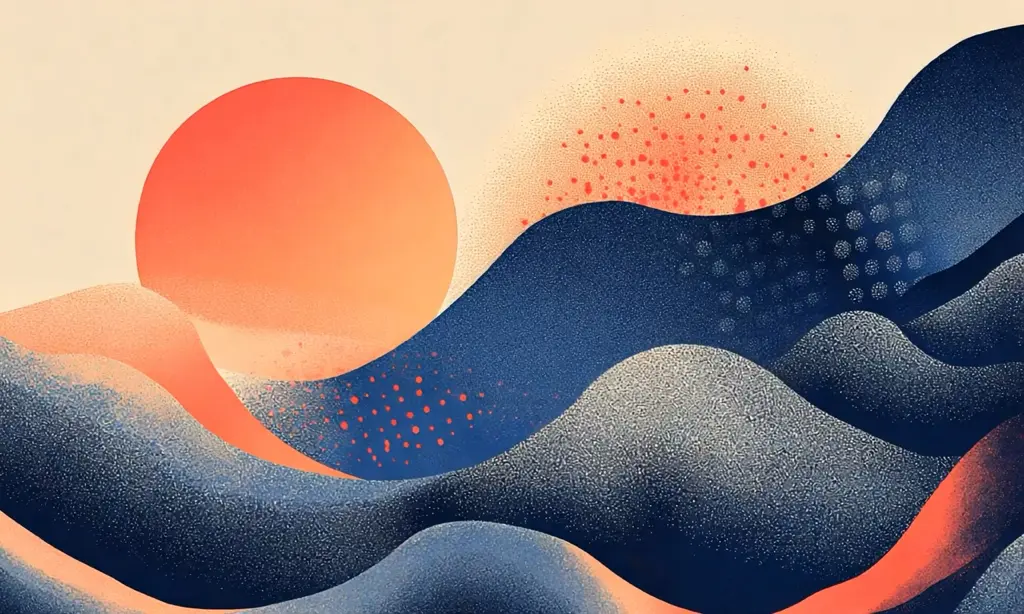The AI Creative Paradox: Why Enhancement Beats Replacement
Exploring how AI serves best as a creative catalyst rather than a replacement, backed by research on AI-human collaboration in content creation

Over the years of building autonomous AI agents, I’ve encountered a fascinating paradox: the most successful AI systems aren’t the ones that create content independently, but those that spark human creativity. Recent research reveals why this might be more than just observation.
The Paradox of Pure AI
When AI generates content alone, something curious happens. Despite sophisticated language models and vast training data, the output often feels familiar, safe, almost forgettable. Studies show that 50% of consumers can spot AI-generated content instantly, and younger audiences actively avoid it. It’s what I call “the sea of sameness” - content that’s technically correct but lacks that indefinable human spark.
This isn’t because AI lacks capability. In fact, in controlled tests, AI can produce work that matches human quality when the source is unknown. Yet something is missing.
The Spark Effect
But here’s where it gets interesting. When humans use AI as a creative catalyst - a starting point for their own ideas - something unexpected happens. Research shows that incorporating AI-generated ideas can increase content novelty by 5.4% with just one idea, jumping to 8.1% with five ideas.
Think about that for a moment. The same AI that produces mediocre content alone can help humans create more novel work. Why? Because AI excels at making connections we might never see ourselves.
Beyond Replacement
This reveals something crucial about the nature of creativity. It’s not about AI versus human anymore. It’s about AI plus human creating something entirely new. Like a calculator unlocking new mathematical possibilities rather than replacing mathematicians, AI tools are opening new creative horizons.
The research backs this up. While AI excels at pattern recognition and generating starting points, humans bring context, emotion, and lived experience to the table. Together, they can forge paths neither could discover alone.
Democratizing Creativity
Perhaps most fascinating is who benefits most from this collaboration. Studies show that less inherently creative writers see the biggest gains from AI collaboration. This isn’t just about augmenting creativity - it’s about democratizing it.
When AI serves as a creative spark, it’s not replacing human creativity; it’s expanding access to creative expression. It’s helping more people overcome the blank page, discover new connections, and express ideas they might never have found otherwise.
The Future of Creative Collaboration
So what does this mean for the future of content creation? Maybe we’ve been asking the wrong question all along. Instead of wondering whether AI can replace human creativity, perhaps we should ask how AI can help us express things we never could before.
The research points to several promising approaches:
- Using AI to generate multiple starting points rather than finished products
- Leveraging AI for connection-making while maintaining human narrative control
- Employing iterative feedback loops between human insight and AI suggestions
Beyond Content Generation
This insight extends beyond just writing. In every creative field where AI is making inroads - from visual art to music composition - we’re seeing similar patterns. The most successful applications aren’t about replacement; they’re about enhancement, augmentation, and discovery.
The Path Forward
As someone building in this space, I’m increasingly convinced that the future of AI in creativity isn’t about generating perfect content. It’s about creating perfect sparks - those initial ideas, connections, and possibilities that humans can then shape into something meaningful.
The data shows that pure AI content often falls into patterns of sameness. But when used as a creative catalyst, it can help humans break free of their own patterns and explore new creative territory.
A New Question
So perhaps it’s time to stop asking if AI can beat human creativity. Instead, let’s ask how AI can help us express things we never could before. How can it serve not as a replacement for human creativity, but as a key that unlocks new forms of human expression?
The future isn’t about AI replacing human creativity. It’s about AI expanding the boundaries of what human creativity can achieve.
What possibilities do you see for AI as a creative catalyst rather than a replacement? How might we use these tools not to automate creativity, but to spark new forms of human expression?
The answers to these questions might just define the next evolution of human creativity.